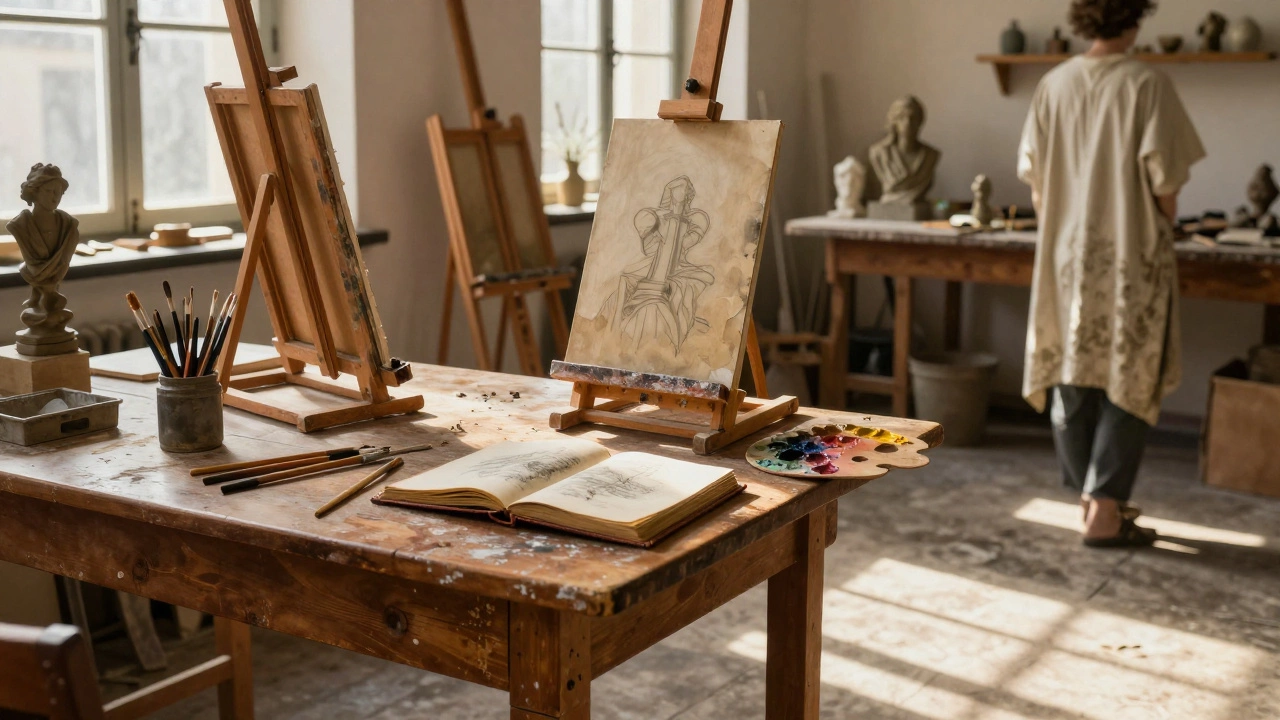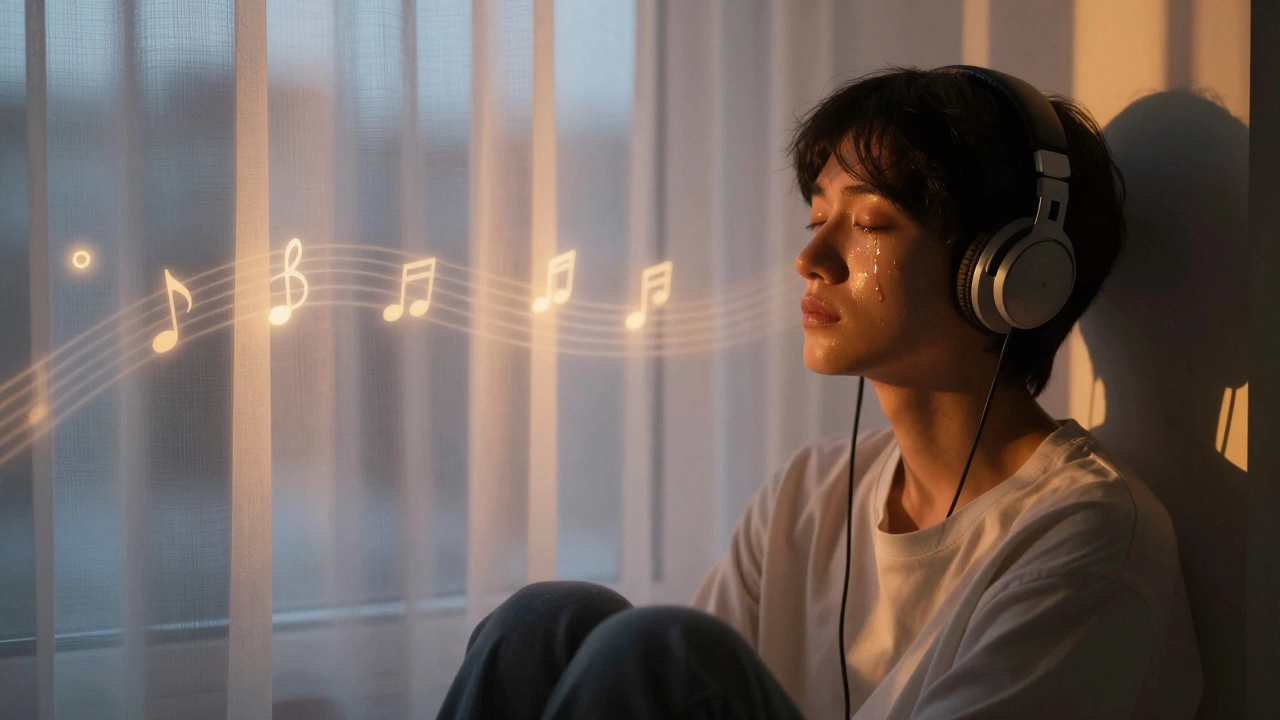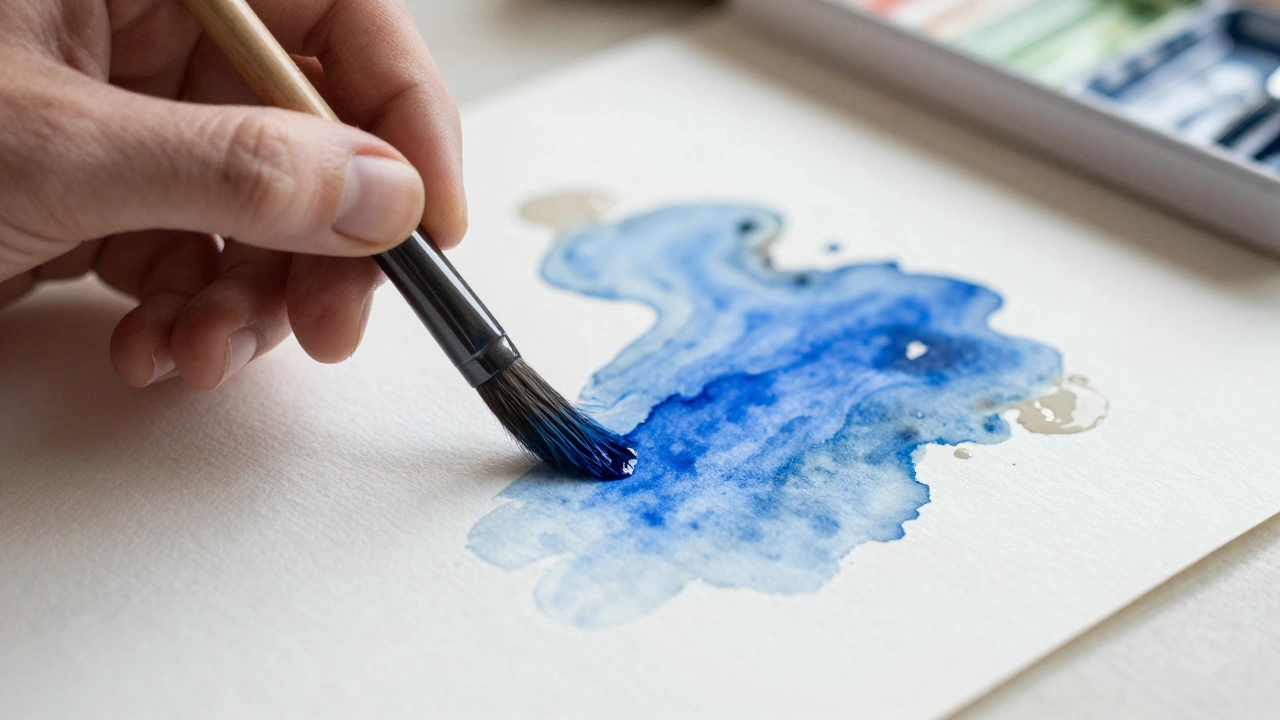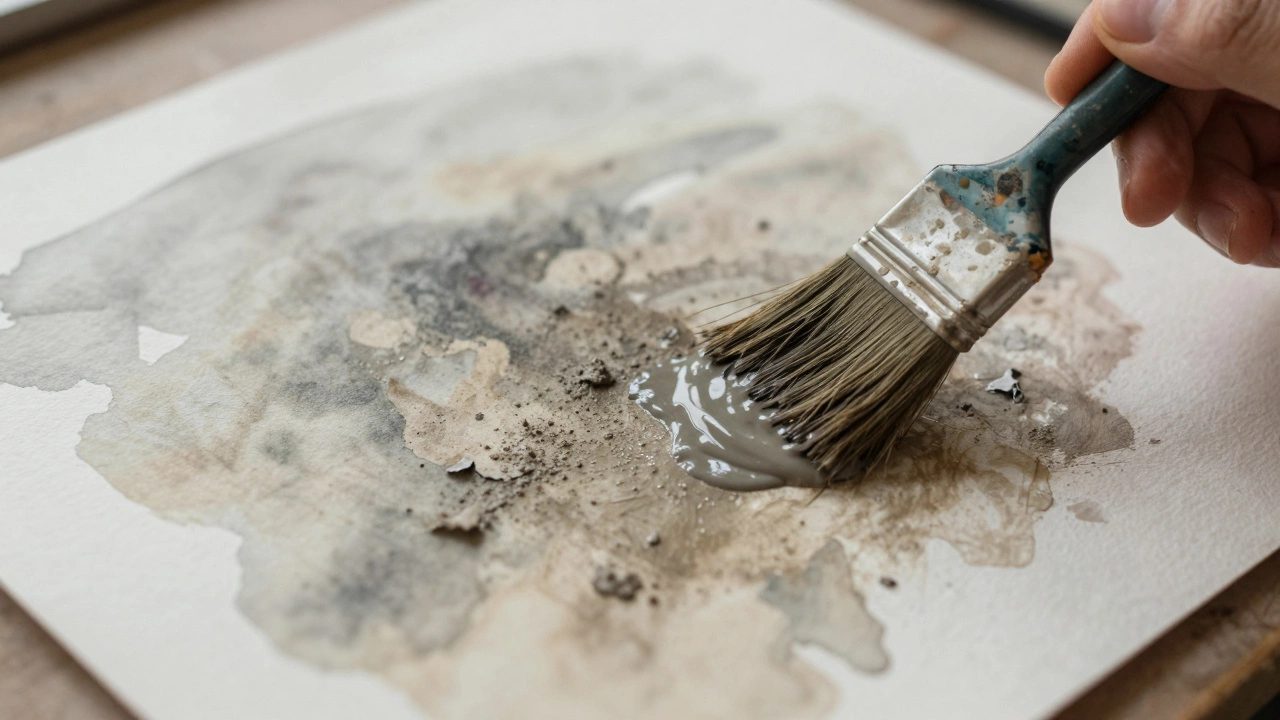Remember that warm voice on PBS, urging viewers to embrace the joy of painting? That was Bob Ross, America's most famous landscape artist. His show, 'The Joy of Painting,' ran from 1983 to 1994, and his calm demeanor paired with a unique painting style captivated millions. But there's more to Ross than just 'happy little trees'.
Bob Ross wasn't always an artist. Born in Daytona Beach, Florida, he spent 20 years in the Air Force. It wasn't until later in life that he stumbled into painting, yet his passion transformed into a career that made him a household name. With his easy-to-follow techniques, he encouraged people to pick up a brush, leading many to discover their hidden talents.
But what made his landscapes, especially those iconic mountains and forests, so special? Ross focused on simplicity and repetition. With a palette knife and a few basic paints, he could whip up a masterpiece in under half an hour. His approach allowed viewers to believe they, too, could paint something beautiful. And that belief, perhaps, is his greatest gift.
- Bob Ross's Early Life
- The Joy of Painting Phenomenon
- Bob Ross's Unique Style
- Legacy and Influence
- Modern Impact of Bob Ross
- Tips from Bob Ross's Techniques
Bob Ross's Early Life
Born on October 29, 1942, in Daytona Beach, Florida, Bob Ross grew up in a time and place that might not immediately seem conducive to a future PBS art star. His father was a carpenter, and his mother was a waitress, emphasizing the value of hard work in young Bob's life.
From a young age, he showed a knack for creativity, though not specifically in painting. It wasn't until his early twenties that he explored art seriously. In fact, Bob spent a significant part of his formative years serving in the U.S. Air Force. Assigned to Alaska, he reached the rank of Master Sergeant. The stunning Alaskan landscapes are credited with heavily influencing the lush scenes he later painted.
In between his official duties, Bob found time for painting, describing it as a perfect way to escape the stress and chaos of life in the military. Spurred by this newfound passion, he eventually left the Air Force to pursue a career in art.
This wasn't an easy decision. Financial stability often eluded him early on, and he worked multiple low-paying jobs to fund his art classes. But his determination was unwavering. During this time, he discovered and adopted the wet-on-wet technique that defined his painting style. This method, sometimes known as 'alla prima', lets artists apply layers of oil paint on a still-wet surface, making it ideal for his quick, impactful landscapes on television.
Bob's journey from military man to a PBS sensation was not straightforward, but his early life experiences undoubtedly shaped not just his skilled hand but also his tranquil, approachable teaching style that would later become beloved worldwide.
The Joy of Painting Phenomenon
When you think of PBS and landscape paintings, there's one name that instantly comes to mind - Bob Ross. His show, The Joy of Painting, wasn't just a TV program; it was a cultural event. Starting in 1983 and continuing for over a decade, it introduced millions to the world of art in the most approachable way possible.
Ross's show aired in over 40 countries and translated into multiple languages, proving that art speaks a universal language. Each episode was structured around creating an entire painting from start to finish, all within roughly 30 minutes. His relaxed and encouraging manner gave everyone confidence that they too could create beautiful landscape paintings.
Why Was It So Popular?
One of the reasons this show became a phenomenon was Ross's unique teaching style. Unlike traditional art instruction, he made the process simple, fun, and stress-free. His signature phrases like "happy little trees" and "no mistakes, just happy accidents" took the fear out of making art.
There was also something magical about Bob’s personality. With a soothing voice and gentle demeanor, watching the show felt like catching up with an old friend who just happened to be a painting master. Viewers appreciated how Bob demystified the art process, making everyone feel they had permission to create.
Not Just Art, But Therapy
During times of stress or anxiety, viewers found a peaceful retreat in Bob's episodes. In fact, many considered it an early form of "art therapy." His focus on positivity and beauty offered a break from everyday troubles, making him a lasting figure in popular culture.
Spreading Art to the Masses
Bob Ross didn't just teach painting; he inspired people to share their work. The simplicity of his techniques brought art into countless homes, schools, and community centers. His influence is seen today with thousands of "Bob Ross-inspired" paintings exhibited at local art shows and galleries.
The Joy of Painting was more than a TV show—it was an open invitation to explore creativity without fear. That's a legacy few can claim, and it’s why Ross remains a beloved figure even years after the show stopped airing. He truly transformed the way we think of art education, accessibility, and the sheer joy of painting.
Bob Ross's Unique Style
When you think of Bob Ross's art, what comes to mind? Maybe it's those peaceful landscapes with towering mountains and gentle rivers. His style was a blend of realism and simplicity, making it accessible to everyone. He famously said, 'We don't make mistakes; we just have happy little accidents,' capturing his relaxed approach to art.
Ross's tool of choice was the two-inch brush, which he used to create magnificent skies, detailed trees, and sprawling water bodies effortlessly. He started with a coated canvas, using a technique known as 'wet-on-wet' or alla prima. This allowed the paint to mix directly on the canvas, creating soft blends and rich textures unique to his work.
The Palette
Anyone who watched Bob paint knows his famous color palette. He often used just a few shades: Phthalo Blue, Alizarin Crimson, and Titanium White, to name a few. These specific hues helped him achieve depth and contrast in his landscape paintings, proving you don't need dozens of colors to make striking art.
Signature Elements
Every painting episode came with some trademarks. Yes, the 'happy little trees' and 'almighty mountains' are cliches, but they're also key elements of his style. These were built using layering techniques that made his paintings pop.
Bob's style wasn't just about painting pretty pictures; it was about conveying an experience, a piece of nature captured on your canvas. It’s no wonder his techniques have stood the test of time, still teaching people around the world the beauty of landscape art.
Legacy and Influence
It's tough to overstate just how much Bob Ross influenced the art world and beyond. His impact wasn't just on his landscape paintings but in how he made art accessible to everyone. Before Ross, painting was often viewed as something only for the elite or the naturally gifted. He turned that notion on its head.
Through his show on PBS, millions discovered painting's therapeutic effects. Many found comfort and joy during difficult times by simply following along with his serene voice and easy methods. Beyond the art supplies and techniques, Ross’s philosophy of happy accidents encouraged viewers to embrace mistakes, both on the canvas and in life.
Impact on Modern Culture
Bob Ross's soothing presence has persisted well into the digital age. With a YouTube presence that draws millions of views and full episodes streamed online, he's reached an entirely new audience. Ross-themed merchandise, from T-shirts to action figures, keeps his brand alive and charming.
What's fascinating is how many professional artists today started with Bob Ross. Many cite him as their first art teacher, crediting his approachable style as the first step into their creative careers.
Memorials and Recognitions
Despite passing away in 1995, Bob Ross's memory still shines bright. In fact, there's even a Bob Ross experience venue in Indiana, where fans can see some of the original paintings up close. Various art institutions have celebrated him with exhibits that highlight his techniques and legacy.
Social Impact
His peaceful demeanor has spread beyond art itself. Mental health advocates increasingly reference his calming techniques as a way to manage stress and anxiety. The simplicity of his painting methods combined with a positive outlook is seen as therapeutic.
Ross once said he didn't make mistakes, only happy accidents. It's this optimistic, inclusive attitude that truly defines his enormous legacy and influence.
Modern Impact of Bob Ross
Decades after his show first aired, Bob Ross continues to influence the art world and pop culture in surprising ways. His gentle approach to art has become a guiding light for new generations seeking solace and creativity.
The internet era has only amplified Ross's reach. YouTube and streaming platforms introduced his old episodes to a younger audience, who find themselves mesmerized by his soothing voice and landscape paintings. Platforms like Twitch even host live viewings, where fans chat and paint along in real time.
Bob Ross in Edu-tainment
Beyond just painting, schools and therapy programs have adopted elements of Ross's method. His belief that anyone can paint has encouraged therapeutic art classes, helping individuals relax and express emotions through art. Bob's philosophy removes the pressure of perfection, making art accessible to all.
Popularity in Merchandise and Media
Ross's cheerful face adorns a range of merchandise, from T-shirts to games. His name and image are licensed for a variety of products, celebrating his lasting legacy and widespread appeal. In fact, according to a 2024 study, Bob Ross-themed merchandise saw a 25% increase in sales over the previous year.
Additionally, his influence appears in media through inspirational quotes, memes, and references in TV shows and movies. Ross isn't just a painter; he's a symbol of positivity in a fast-paced world.
The way Bob Ross has been embraced by digital culture speaks volumes about his enduring charm. By breaking art down to its most authentic form, Ross gifted everyone the chance to embrace their inner artist.
Tips from Bob Ross's Techniques
Ever thought painting a mesmerizing landscape was out of your reach? Channeling your inner Bob Ross might change that. Whether you're a beginner or just looking to refine your style, these tips drawn from his PBS days will get you painting with confidence.
1. Start with a Wet Canvas
One of Ross's signature techniques was starting with a wet canvas, often referred to as the 'wet-on-wet' technique. By applying a thin coat of liquid white paint over the canvas first, he ensured colors blended smoothly. This method allows for seamless transitions and clouds that look almost real.
2. Timing Is Key
The 'wet-on-wet' method isn't just for swoony blending. It's the secret behind those quick creations on 'The Joy of Painting'. To master it, watch the clock. Too long, and the canvas dries. Too short, and colors could muddle. Practice makes perfect.
3. Master the One-Inch Brush
The one-inch brush is more versatile than it looks. From painting tree trunks to fluffy clouds, this tool is a staple in Bob's arsenal. Hold it firmly yet gently for control, dabbing lightly for bushes or scraping harder for tree branches.
- Light Pressure: Perfect for soft textures like background forests.
- Firm Grip: Essential for mountains and shoreline rocks.
4. Embrace Mistakes
'There are no mistakes, only happy accidents.' This iconic Bob Ross mantra is more than comforting—it encourages experimentation. Painting over a smudge or transforming it into a beautiful tree not only improves skills but boosts creativity.
5. Palette Knife Magic
Ross often used a palette knife for bold textures, especially for snow-capped mountains. By holding the knife flat and sliding it down with precision, layers of snow would magically appear on mountainsides.
6. Use Simple Colors
Bob loved simplicity. With a basic palette of primary colors, he would create all sorts of shades. This approach not only keeps the process straightforward but also showcases how limitless your creativity can be with limited choices.
7. Speed Isn't Everything
Even though Bob painted fast, take your time. Start slow, learn the strokes, and build confidence. Speed will naturally follow once the techniques become second nature.
By taking these tips to heart, budding artists at any level can explore the same pleasure and serenity found in creating landscape paintings just like Bob Ross did on PBS. Remember, the joy of painting is all about the process. So, pick up that brush and let the art come to life!




